Slavery on film: What is Hollywood’s problem?
-
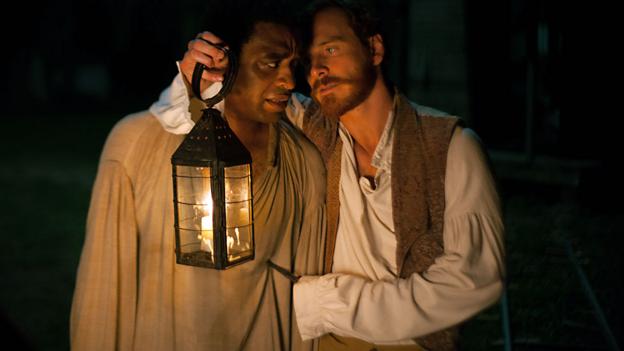
- Captured on film
- A new film, 12 Years a Slave, stars Chiwetel Ejiofor as a free man who is sold into slavery. Michael Fassbender plays a cruel plantation owner. (Fox Searchlight)
-

- Harsh reality
- The film has been both praised and criticised for its unflinching – and some say too brutal – depiction of the cruelties of slavery. (Fox Searchlight)
-

- Tough to take
- Directed by Steve McQueen, it’s been acclaimed by critics – but a small number of Toronto Film Festival attendees walked out of a screening. (Fox Searchlight)
-
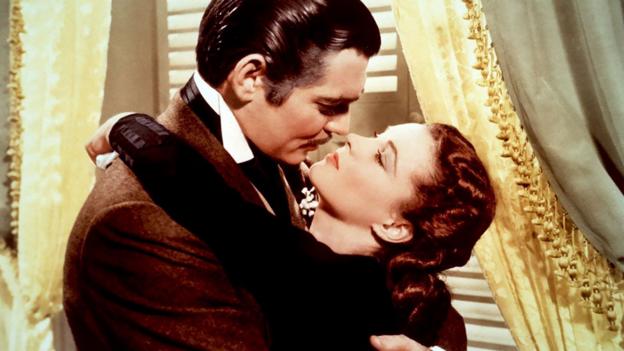
- Rose-tinted view
- It is a departure from Hollywood’s traditional treatment of the issue. Films such as Gone with the Wind are seen by some as presenting an unrealistic portrayal. (Rex Features)
-
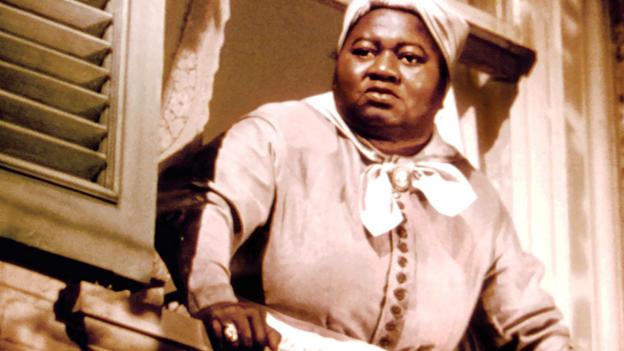
- Award-winning
- Hattie McDaniel was the first African-American to win an Oscar when she played Mammy in the film. But some criticised the role for affirming a racial stereotype. (Rex Features)
-
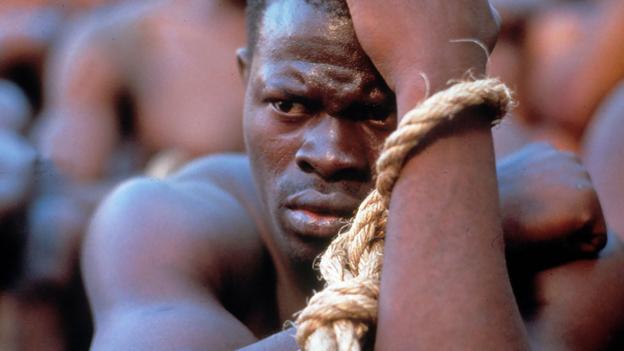
- All at sea
- Steven Spielberg has tackled the topic in his films. Amistad told the story of a mutiny on the slave ship, La Amistad in 1839. (Rex Features)
-

- President’s Men
- In 2012, he took on the subject from a different angle – from the perspective of Abraham Lincoln, and his attempts to abolish slavery once and for all. (Twentieth Century Fox)
-
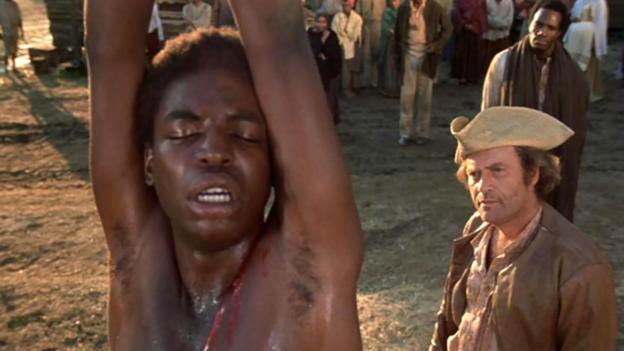
- Novel approach
- The 70s TV series Roots was based on Alex Haley’s novel about slavery and was hugely successful. Its finale had some of the highest audience numbers in US TV history. (ABC)
-

- Revenge fantasy
- In 2012, Quentin Tarantino’s Django Unchained was a fun, but visceral caper about a former slave who enacts revenge on an evil plantation owner. (The Weinstein Company)
A new film, 12 Years a Slave is attracting attention for its brutal
depiction of slavery. But why have directors been reticent to tackle the
subject until now? Tom Brook reports.
Slavery is a dark chapter in US history. And surprisingly few Americans seem to know the full horror of what the country’s slave population had to endure. Over the years Hollywood has been reluctant when it comes to filling in the details. But is this down to audience disinterest – or is there a deeper issue? “There still are a lot of Americans in the marketplace who don’t really want to see the reality of slavery − and Hollywood being a business may be wary about showing too much of that,” says Screen International film critic David D’Arcy.
But now a forthcoming picture, the highly-praised 12 Years a Slave from British filmmaker Steve McQueen, is about to bring Americans what many view as the most realistic and bold portrayal of slavery ever seen on the big screen. It opens next week in US cinemas and it’s a film that could both educate and inspire − as well as alienate.
The film is based on the published memoir of Solomon Northup, a free black man from Saratoga Springs in New York who was kidnapped into slavery in 1841. Northup was stripped of his identity, given a new name and sent to toil on Louisiana’s plantations. The film shows his mistreatment − and that of his fellow slaves - in all its full horror. Steve McQueen maintains he had a straightforward goal: “I just wanted to make a film about slavery because it was something which hadn’t been actually looked at before in depth − and it was just a gaping hole in film history and I thought I want to investigate. I want to look.”
That assertion has provoked the ire of the long-established New York film critic Armond White. “Anyone who believes that 12 Years a Slave is breaking new ground or has something new to say,” he says, “they’re probably unfamiliar with the fairly long history of movies that have dealt with slavery.”. In fact debates over slavery in cinema among directors, critics, scholars and the general public can get quite heated − and there is plenty of disagreement. “Slavery is a very controversial topic to discuss within American cinema,” says Professor Dexter Gabriel, who teaches a class on slavery in cinema at George Mason University. What many would accept is that the hodgepodge of Hollywood films that have tackled slavery have often featured negative representations of black people.
Characters or caricatures?
Professor Gabriel cites pictures like the 1939 classic Gone With The Wind: “Most movies that we’ve seen on slavery in American cinema have been the old plantation epics,” he says. “Hollywood depicted slavery where the slaves were depicted as happy, as jovial and in really demeaning stereotypes such as the Mammy or the Uncle Tom.” But some will argue that these plantation epics weren’t always presenting slaves in a negative light. The Mammy, a caricature of an African-American matron that many find offensive, was famously portrayed by Hattie McDaniel in Gone With The Wind. But the character is viewed as well-drawn by critic Armond White. “Mammy is a full-blooded character, not a stereotype at all − and she stands equal to the white characters,” he says.
When it comes to portrayals of slavery many would agree that it wasn’t a story told on the big screen that had the most impact but Roots, a TV miniseries, broadcast in 1977.The series chronicled what happened to a young African sold into slavery and brought to the US −and half a century later its finale still holds the record as one of the highest-rated TV programmes in history. Professor Gabriel points out that Roots presented slavery to the American public from a specific perspective − one which perhaps made it easier for viewers to relate to the plight of slaves. He says it was “a very middle-class version of slavery, where the slave experience is almost turned into an immigrant story so that it fits in with the United States.” Armond White, in what many might see as an exaggeration, sees the impact of Roots as being dramatic. “I think it’s fair to say that before 1977 most Americans had no idea that slavery had ever existed,” he says. “They didn’t know what it was like at all, and Roots revealed all of that. It changed Americans' perceptions of their own history.”
Slavery has also been tackled by Steven Spielberg, one of Hollywood’s greatest storytellers, both in his 1997 picture Amistad and in Lincoln, which was released last year. Amistad portrays a 19th Century mutiny by slaves who took control of the ship La Amistad off the coast of Cuba − as well as the legal battle that took place after their capture. “I think Amistad is one of the great movies in Spielberg’s filmography,” says Armond White, “because it looks at slavery as an aspect of law in America and it examines the legal aspects that pertained to slavery. It’s about how men create laws and how men respond to laws.” But Spielberg’s Lincoln didn’t hold up so well in several assessments. “We were treated to a film that was ostensibly talking slavery but was really about great white men who helped end slavery,” says Professor Gabriel.
Quentin Tarantino’s recent Django Unchained, a revenge fantasy in which a freed slave joins forces with a German bounty hunter to retaliate against an evil plantation owner, won two Oscars, critical raves and made a ton of money at the box office. But it has also been interpreted in less than flattering terms for its portrayal of slavery. Professor Gabriel is one of its critics. “In Django what we got was a very fantastical version of slavery based much more on modern notions of black masculinity and swagger than anything to do with the slave experience.”
“For me the problem with Django Unchained is that Tarantino seemed to make a joke of a very tragic history,” says Armond White. “He seemed not to take it seriously. He likes to play with movie tropes and Django Unchained is really his version of a 70s Blaxploitation film.”
Brutal reality
With 12 Years a Slave about to arrive in US cinemas some are asking if it will redress the balance and finally bring audiences a more accurate representation of slavery.
Variety’s chief film critic Scott Foundas admires the picture and thinks it will at least give audiences a hefty dose of reality. “I think 12 Years a Slave is unique in terms of motion pictures in trying to have this very plausible realism,” he says. “In terms of this kind of brutal realism it’s pretty much unparalleled in the history of American movies.” And Screen International film critic David D’Arcy definitely welcomes a more visceral screen portrayal. “I think we want to see the blood and the grand emotion,” he says. “I don’t think the depiction of it is about the legalities or the shady evolution or anything like that.” But not everyone welcomes such a graphic approach. When asked about the picture’s brutality, Armond White, who is African-American, says he “felt sickened by it.” He adds, “I think 12 Years a Slave is not very enlightening to me for someone who has heard about the history of slavery through personal anecdotes of family and community.”
Despite his protestations, the vast majority of US critics applaud this movie − and Oscars watchers believe it will earn a trove of nominations. But 12 Years a Slave’s more immediate concern is its fate at the box office. With so many Americans historically tentative when it comes to confronting the horrific details of slavery, will sufficient numbers want to see such a brutal portrayal when the film opens in the US next Friday?
Fox Searchlight Pictures, who’re backing the picture in America, are no doubt anxiously waiting to find out the answer.
